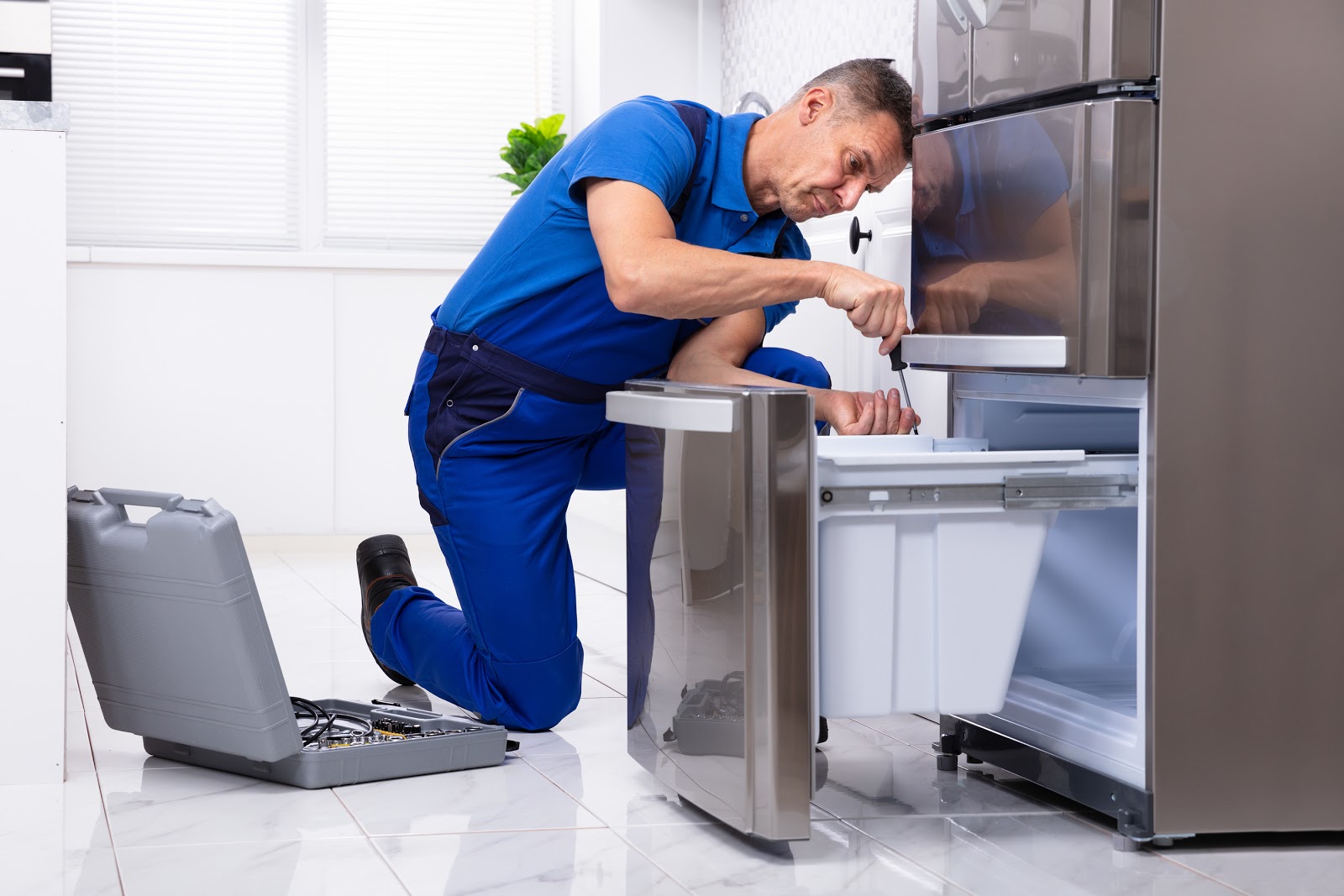
Image Source: Google
Refrigerators are an essential appliance in any home, keeping our food fresh and drinks cold. However, like any other appliance, they require regular maintenance to ensure they continue to run efficiently and effectively. By following a few simple maintenance tips, you can prevent costly repairs and extend the lifespan of your refrigerator. If you need information about refrigerator appliance repair, you may visit here https://sydneyappliancerepair.au/refrigerator-repairs/
Read on to discover the essential guide to refrigerator maintenance.
1. Cleaning the Condenser Coils
One of the most important maintenance tasks for your refrigerator is cleaning the condenser coils. These coils are located either at the back or the bottom of the refrigerator and are responsible for releasing heat from the appliance. Over time, dust and debris can build up on the coils, causing the refrigerator to work harder to cool your food. Here's how to clean the condenser coils:
- Unplug the refrigerator to ensure your safety.
- Locate the condenser coils – they are usually at the back or bottom of the refrigerator.
- Use a vacuum cleaner with a brush attachment to gently remove dust and debris from the coils.
- You can also use a coil brush to clean hard-to-reach areas.
- Once the coils are clean, plug the refrigerator back in and ensure it is running efficiently.
2. Checking the Door Seals
The door seals, also known as gaskets, are responsible for keeping the cold air inside the refrigerator. If the seals are worn or damaged, cold air can escape, causing the refrigerator to work harder to maintain the set temperature. To check the door seals:
- Inspect the seals for any signs of wear, tears, or looseness.
- Close the refrigerator door on a piece of paper – if the paper easily slides out, the seals may need to be replaced.
- Clean the seals with warm, soapy water to remove any dirt or debris that may be affecting their effectiveness.
- Consider replacing the seals if they are visibly damaged or not creating a tight seal.
3. Defrosting the Freezer
Frost buildup in the freezer can cause the appliance to work harder and less efficiently. To prevent this, it's important to regularly defrost the freezer. Here's how to defrost your freezer:
- Remove all food items from the freezer and store them in a cooler or another freezer.
- Turn off the freezer and leave the door open to allow the ice to melt naturally.
- Place towels or a shallow pan underneath the freezer to catch any water runoff.
- Once the ice has melted, clean the freezer with a mixture of warm water and mild detergent.
- Dry the freezer thoroughly before turning it back on and returning the food items.
4. Keeping the Refrigerator Level
It's essential to keep your refrigerator level to ensure proper function and prevent unnecessary wear and tear on the appliance. If the refrigerator is not level, the doors may not close properly, and the compressor may have to work harder to keep the refrigerator cool. Here's how to level your refrigerator:
- Use a level to check if the refrigerator is sitting evenly on the floor.
- Adjust the leveling feet at the bottom of the refrigerator to ensure it is level from side to side and front to back.
- Check the doors to ensure they are closing properly and creating a tight seal.
- Make any necessary adjustments to ensure the refrigerator is level and functioning efficiently.
5. Cleaning the Interior
Regularly cleaning the interior of your refrigerator is essential to prevent odors and keep your food fresh. Here are some tips for cleaning the interior of your refrigerator:
- Remove all food items from the refrigerator.
- Use a solution of warm water and baking soda to clean the interior surfaces, shelves, and drawers.
- Rinse with clean water and dry with a clean cloth.
- Check expiration dates on food items and discard any expired or spoiled items.
- Return the food items to the refrigerator, ensuring they are properly sealed and stored.
6. Checking the Temperature
Monitoring the temperature of your refrigerator and freezer is crucial to ensure your food stays fresh and safe to eat. Here's how to check the temperature of your appliance:
- Place a thermometer in the refrigerator and freezer to monitor the temperatures.
- The refrigerator should be set between 37-40 degrees Fahrenheit, while the freezer should be set at 0 degrees Fahrenheit.
- Adjust the temperature settings as needed to maintain the proper temperatures.
- Check the thermometer regularly to ensure the temperatures are consistent and accurate.
By following these essential maintenance tips for your refrigerator, you can prevent costly repairs and keep your appliance running efficiently for years to come.